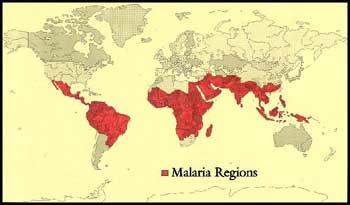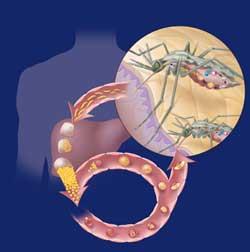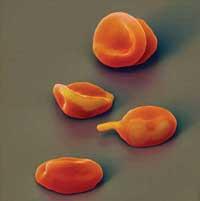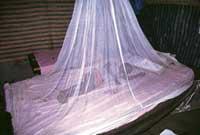Malaria, two names for a terrible health problem
XX. Until the mid-20th century, malaria was much more widespread than today and was common in many temperate countries. However, 90% of malaria deaths occur in sub-Saharan Africa and every 30 seconds a malaria-ill child.

Parasite and mosquito
Malaria has been known for a long time, but until just over a century ago they did not know what causes the disease. Formerly it was considered that the origin of the disease was that of the rolled marshes, hence its name ('mal aria' or bad air). In 1880, scientists discovered the real culprit of malaria: the unicellular Plasmodium parasite that infects the human liver and red blood cells. It was later discovered that the parasite is transmitted from one person to another by puncturing the female carabiner of the genus Anopheles.
In humans, malaria is caused by four species of Plasmodium: P. malariae, P. vivax, P. ovale and P. falciparum . The latter is responsible for the most serious type of malaria. In all of them, the vector is the mosquito Anopheles, through which it is essential to pass the parasite so that the cycle advances and the parasite becomes a pollutant of the human being. In fact, Plasmodium has a complex cycle and not all stages were known until 1948.
Malaria cycle

Within red blood cells, parasites grow in two ways, as they can have an asexual sexual cycle. Female and male gamtocytes form in the sexual cycle. They die in the blood and when a female carabiner arrives they gather in the stomach of the mosquito. On the wall of the stomach oocysts are formed that after a few days give rise to a large number of sporozoites. The spores are collected in the salivary gland of the mosquito and are prepared to enter the inside of the host through the next puncture.

On the other hand, in the asexual cycle, parasites develop in red blood cells. For its development they use the hemoglobin of red blood cells, responsible for the transport of oxygen in the blood. As in liver cells at first, in their interior are formed schizontes rich in merozoites that, when they mature, explode and return to the blood. Incidentally, red blood cells are destroyed. And much more will be destroyed while the disease is not controlled, as newly released merozoites will contaminate other red blood cells.
Severe disease

Plasmodium varies slightly from species to species. As for the severity of the disease, for example, it is clear that P. falciparum causes further damage. In the rest of the species, every time a red blood cell is exploited there is not so much damage. In the case of P. falciparum, on the contrary, parasites reproduce quickly and can contaminate more than 30% of red blood cells. Apparently, one of the causes is: P. falciparum contaminates all forms of red blood cells. For their part, P. vivax and P. oval choose small red blood cells and P. malariae only infects adults.
The first symptoms of malaria appear between 9 and 14 days after the mosquito bite, and are similar to those of the flu: fever, headache, nausea... If the disease progresses, anemia appears from the destruction of red blood cells. In addition, parasites prevent blood from entering the brain and other major organs, as they obstruct blood vessels, causing serious problems.
Sterile fight against malaria
The installation of basic hygiene services and sewers in some areas has allowed malaria control by eliminating mosquito breeding areas. However, in many countries they still do not have this advance, besides having a temperature and humidity between 20-30ºC, that is, an ideal climate for mosquito reproduction. Other ways of slaughter, especially insecticides, have been tested. Among them the hazardous DDT pollutant has been used. But the mosquito has developed its resistance to insecticides, and the same has happened with the drugs used against the parasite.

Other pathways based on the interruption of the parasite cycle in the host body or the promotion of the immune system have also been addressed. Many people also have many expectations in the vaccine of researcher Patarroyo. However, there is still no complete solution to fight malaria. Therefore, the knowledge of the genetic code of the mosquito Anopheles and the parasite Plasmodium has opened new paths. Both have been released in the journals Science and Nature, along with many other research. Will the solution come from all that work?
Complementary articles:
Decoded mosquito genome that transmits malaria
Buletina
Bidali zure helbide elektronikoa eta jaso asteroko buletina zure sarrera-ontzian











